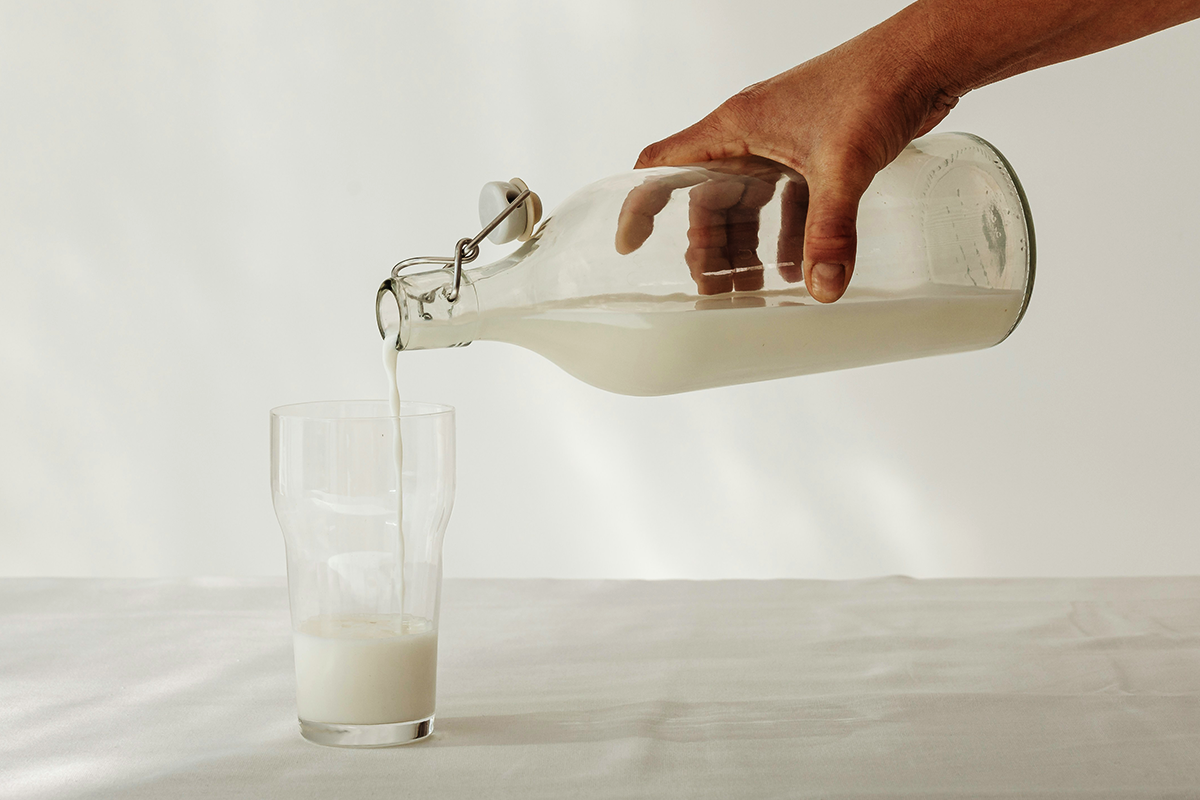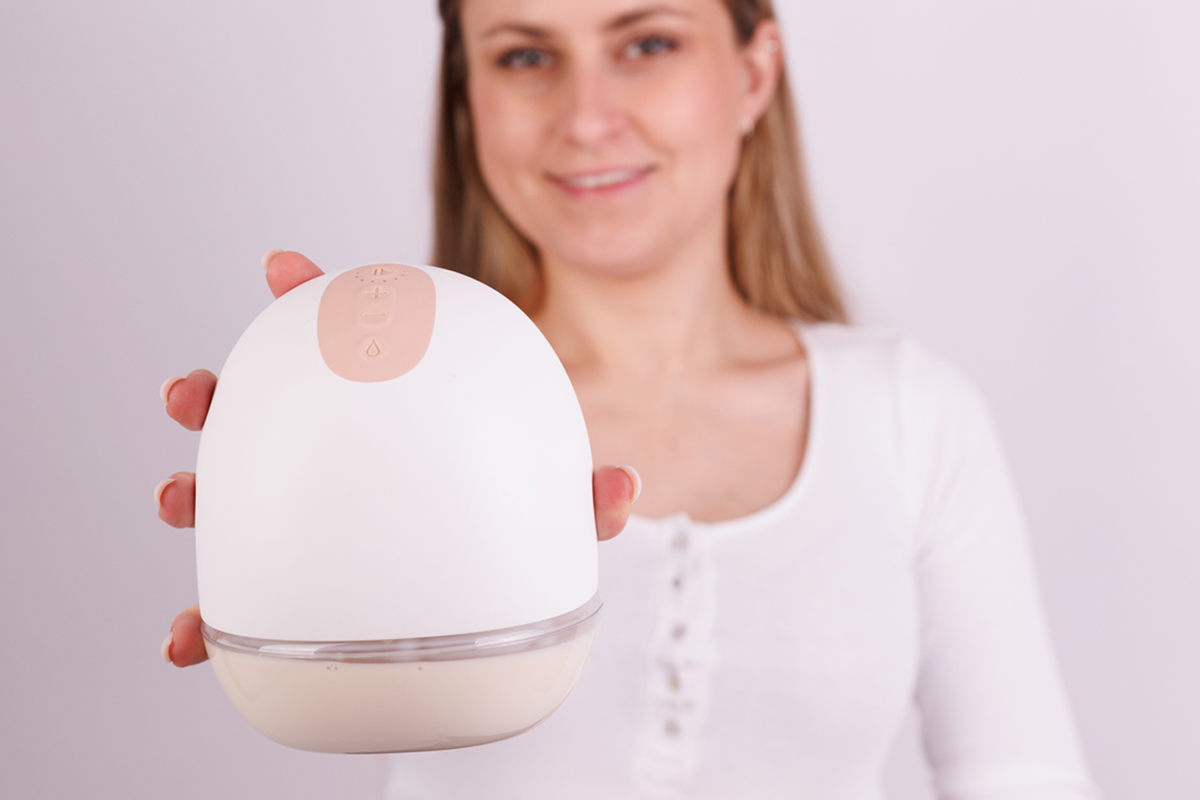As a nursing parent, you may have noticed variations in the color of your breast milk. These changes can be both intriguing and concerning, prompting questions about what they signify for your infant's nutrition. Understanding the spectrum of normal breast milk colors is crucial for your peace of mind and your baby's well-being. This guide will decode the meaning behind different breast milk hues, from creamy white to surprising shades of blue, pink, or even green. You'll learn which color changes are typical and which might warrant a conversation with a healthcare provider. Armed with this knowledge, you can confidently nourish your little one, knowing you're providing the best possible start in life.
What is the normal color of breast milk?
The typical color of breast milk is generally white or off-white, though it can vary slightly. Breast milk (1) may have a faint bluish or yellowish tint, which is completely normal. The color can change throughout the day and even during a single feeding session.
In the first few days after birth, colostrum is produced (2), which has a thick, golden-yellow appearance. This is the first of the 3 types of breast milk—colostrum, followed by transitional milk, and then mature milk. As milk production increases, the color transitions to a more whitish hue. This transitional milk gradually becomes mature milk within 10-14 days postpartum.
What are the different colors of breast milk?
Breast milk can come in a variety of hues, each reflecting different factors and stages of lactation. The most common breastmilk colors include:
White or Creamy
The most common color, ranging from bluish-white to yellowish depending on fat content and time of day.
Blue-Tinted
Often seen in foremilk (the milk at the start of a feeding); thinner and more watery in appearance.
Yellow or Golden
Common in colostrum (the first milk after birth) or frozen breast milk. Rich in antibodies and nutrients.
Green
Usually caused by eating green vegetables like spinach or taking certain supplements. Harmless in most cases.
Pink, Red, or Rust-Colored
May indicate small amounts of blood from cracked nipples or "rusty pipe syndrome" in early breastfeeding. Typically safe but worth monitoring.
Brown or Orange
This color may be due to traces of old blood in the milk—especially if you've experienced nipple damage—or from certain foods or supplements in your diet. Brown milk may be caused by what is known as the rusty pipe syndrome, but don’t worry, it should clear after a few days as more milk flows through your breasts and your baby can continue feeding.
Black
Very rare and may be linked to certain medications, such as some antibiotics. Medical advice is recommended immediately.
Unusual colors of breast milk and what they might mean
Seeing red, pink, or brown shades in your breast milk can be alarming, but it doesn’t always mean something is seriously wrong. These colors are usually caused by blood in the milk, which can happen for a variety of reasons:
Common causes:
- Cracked or bleeding nipples: This is one of the most frequent reasons. When the skin on your nipples is damaged—especially in the early days of breastfeeding—small amounts of blood can mix with the milk. A bleeding nipple while nursing can be uncomfortable but is usually manageable with proper latch correction and nipple care.
- Broken blood vessels in the breast: Sometimes tiny capillaries inside the breast can burst due to engorgement, vigorous pumping, or trauma, leading to slight bleeding.
- Rusty pipe syndrome: This temporary condition occurs in some breastfeeding parents during the first days postpartum. It gives the milk a rusty, brownish or pink tint due to old blood in the milk ducts. It usually resolves on its own within a few days and is not harmful to your baby.
Should you keep breastfeeding?
In most cases, yes. Breast milk with a small amount of blood is generally safe for your baby. However, if your baby refuses the milk, or if you’re experiencing significant pain, ongoing bleeding, or signs of infection (such as fever, swelling, or pus), you should consult a healthcare provider.
Can food or supplements change the color of breast milk?
Certain foods and supplements can indeed alter the hue of your breastmilk color. This phenomenon is typically harmless and temporary, often reflecting your recent dietary choices. For instance, consuming foods rich in beta-carotene, like carrots or sweet potatoes, may lend an orange tint to your milk. Similarly, eating large quantities of green vegetables might result in a subtle greenish shade.
Supplements can also influence milk color. Iron supplements may cause a green tint. It's important to note that these color changes don't affect the nutritional value of your breastmilk.
💡 While most color variations are benign, persistently unusual colors or sudden changes without dietary explanations warrant consultation with a healthcare provider.
They can help determine if the color shift indicates any underlying health concerns or medication effects.
Are there other factors affecting breastmilk color?
There are various other elements that can impact the color of breastmilk. While the hue may vary, this is a natural occurrence influenced by several factors:
- Stage of lactation: Colostrum, the first milk produced after birth, is typically thick and yellowish or golden in color. As lactation progresses, the milk transitions to a thinner, more opaque bluish-white or yellowish hue.
- Time since last feeding: Milk at the beginning of a feeding (foremilk) is often more watery and pale, while the hindmilk at the end of a feeding tends to be richer and creamier in appearance due to its higher fat content.
- Maternal factors: Hormonal changes, medications, or certain health conditions like jaundice or breast infections (mastitis) can temporarily affect the color of breastmilk.
- Lipase activity: High levels of the enzyme lipase can cause breastmilk to appear thicker or have a soapy taste when stored, but this doesn't necessarily indicate a problem.
- Storage time: Prolonged storage or exposure to air can cause breastmilk to develop a slightly bluish, greenish, or pinkish tint due to oxidation, but this doesn't affect its nutritional value.
While color variations are common and usually harmless, it's always advisable to consult a healthcare professional if there are any persistent or concerning changes in the appearance of breastmilk.
Why does thawed breast milk look different?
Thawed breast milk often appears different from freshly expressed milk, which can be concerning for nursing parents. This variation in breastmilk color is typically normal and doesn't indicate a problem with the milk's quality or safety.
When breast milk thaws, you may notice:
- Separation of milk components
- A slightly yellow or bluish tint
- Small white flecks or particles
These changes occur due to the freezing, thawing, and rewarming breast milk, which alters its structure. The fat content separates and rises to the top, while other components settle at the bottom.
To restore the milk's consistency, gently swirl the container. Avoid vigorous shaking, as this can damage the milk's beneficial properties. Once mixed, the breastmilk color should appear more uniform and resemble fresh milk.
Will my baby get sick from colored breast milk?
Rest assured, in most cases, variations in breastmilk color are normal and pose no risk to your baby's health. The color of your breastmilk can change due to various factors, including your diet, medications, or even the time of day.
When to be concerned about breast milk color?
While breastmilk color variations are usually normal, certain changes may warrant attention.
Contact your healthcare provider or lactation consultant if:
- Color changes persist beyond a few days
- You experience pain, swelling, or decreased milk supply
- Your baby shows signs of illness or feeding difficulties
Understanding the color variations in your breast milk empowers you to make informed decisions about your nursing journey. While most changes are harmless and reflect natural fluctuations in your body, it's crucial to remain vigilant. Monitoring your milk's appearance can provide valuable insights into your health and your infant's nutritional needs. Should any persistent or concerning changes arise, consulting with a healthcare provider is advisable. They can offer personalized guidance and ensure optimal well-being for both you and your little one. Armed with this knowledge, you can approach breastfeeding with greater confidence, knowing you have the tools to interpret this vital aspect of infant nutrition.
Sources:





